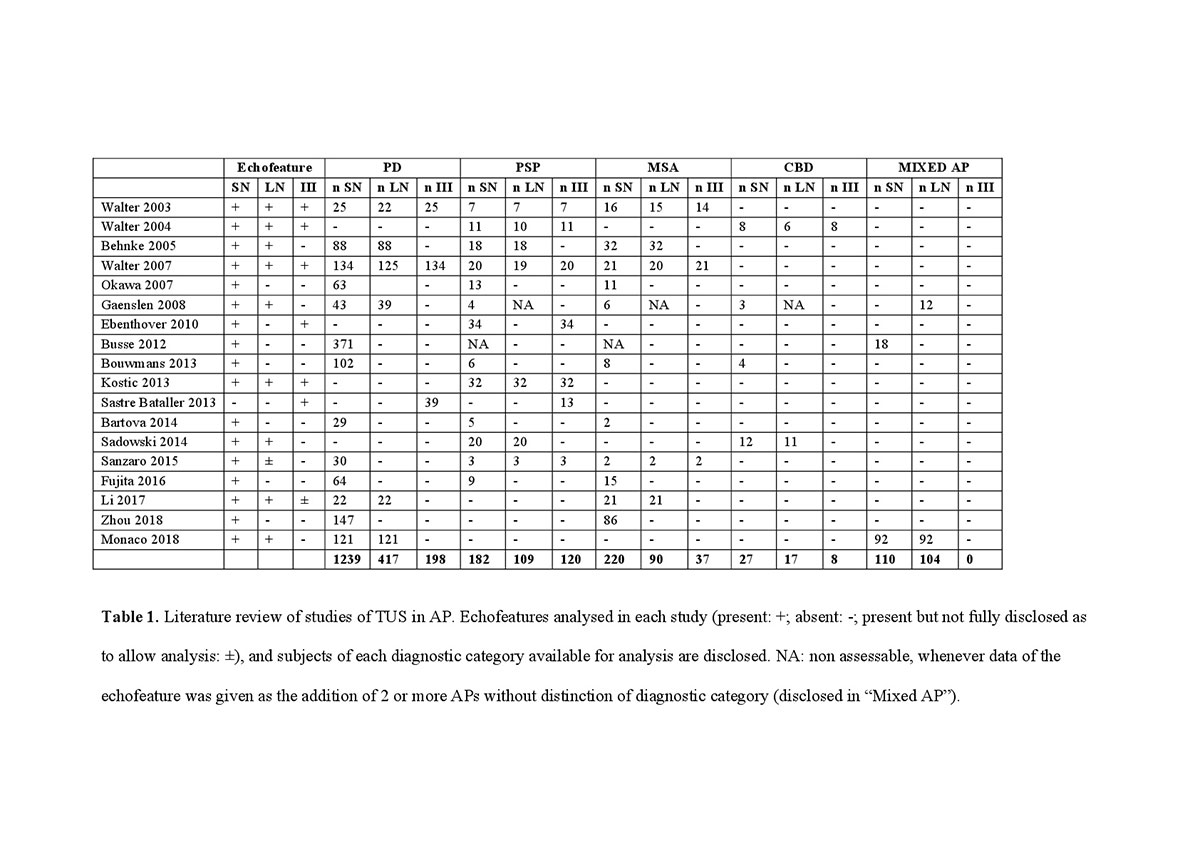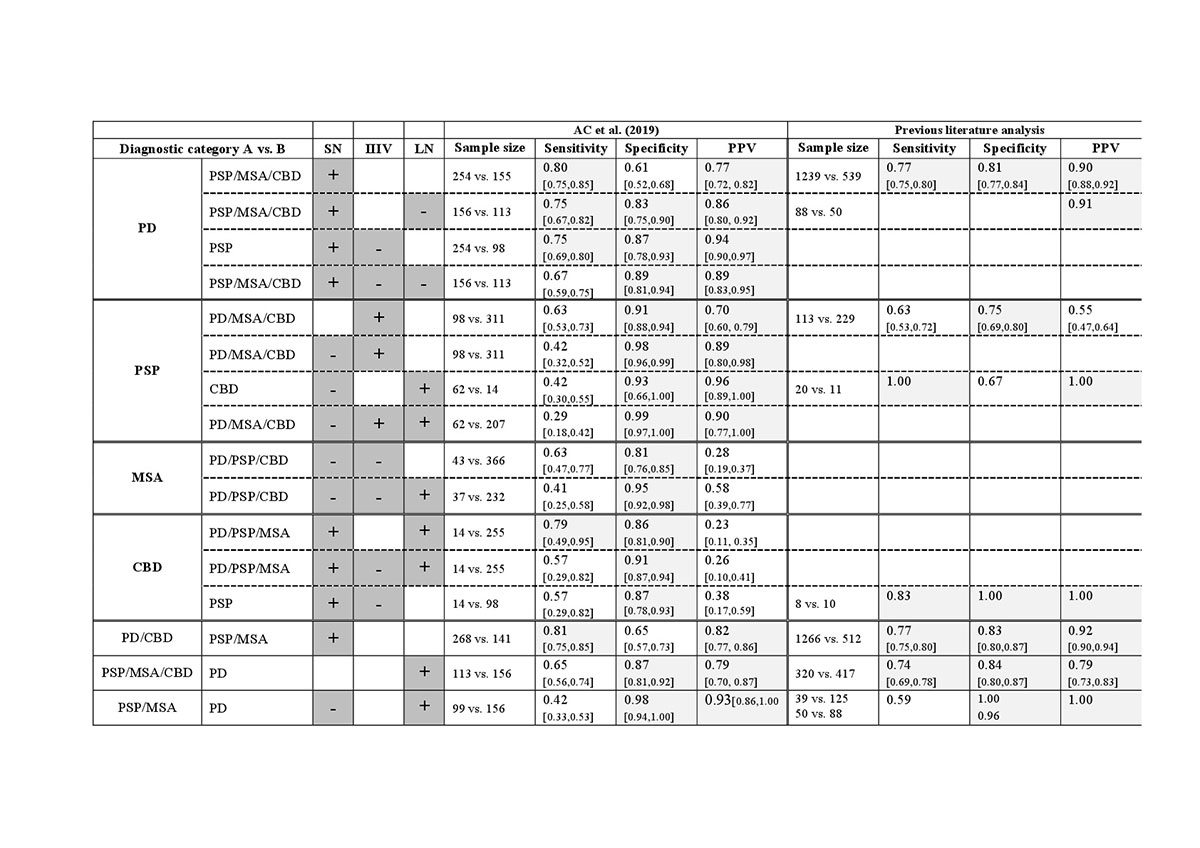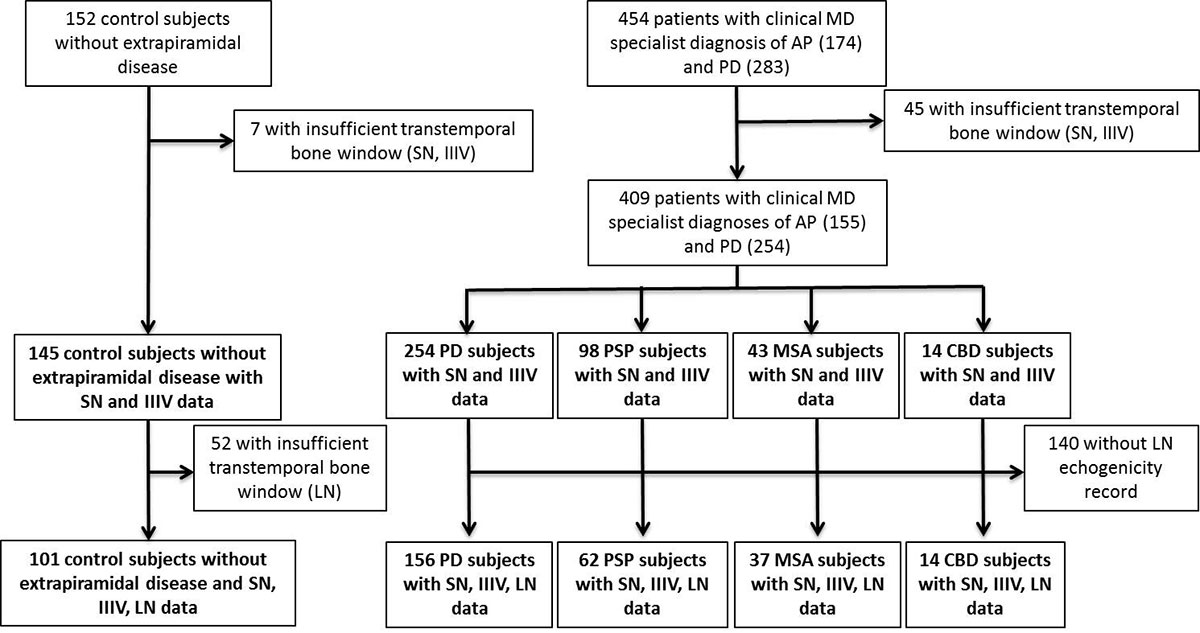Session Information
Date: Tuesday, September 24, 2019
Session Title: Parkinsonisms and Parkinson-Plus
Session Time: 1:45pm-3:15pm
Location: Agora 3 West, Level 3
Objective: To assess real clinical practice usefulness of transcranial ultrasound in atypical parkinsonism differential diagnosis, and to perform a critical analysis of previous literature in this topic for comparison.
Background: Substantia nigra hyperechogenicity (SN+) in transcranial ultrasound (TUS) is frequent in Parkinson’s disease (PD), while lenticular nucleus hyperechogenicity (LN+) and III ventricle enlargement (IIIV+) are common in Atypical Parkinsonism (AP). However, there are no studies assessing the diagnostic yield of all TUS biomarkers in AP (progressive supranuclear palsy, PSP, multiple system atrophy, MSA, corticobasal degeneration, CBD). Previous references lack homogeneous criteria and data are incomprehensive (Table1).
Method: Analysis of TUS performed in routine clinical practice in AP and PD patients from two tertiary hospitals. Expert recommendations were strictly followed. Previous literature was critically analysed.
Results: 155 AP (98 PSP, 40 MSA, 14 CBD), 254 PD, 145 control subjects were included (Figure1). We confirmed good sensitivity for SN+ in PD (80%), but specificity was lower than reported (61%) (Table2). LN+ and IIIV+ had moderate sensitivity for AP and PSP diagnosis respectively (65%, 63%), but specificity was higher than reported (87%, 91%). We confirmed high specificity and positive predictive value of the combination SN/LN (98%, 93% AP; 83%, 86% PD). The combinations of two or three echofeatures, previously unreported, showed high specificity but lower sensitivity (SN/IIIV: 75% sensitivity, 87% specificity PD; 42% sensitivity, 98% specificity PSP) (SN+LN+: 79% sensitivity, 86% specificity CBD) (SN/IIIV/LN: 67% sensitivity, 89% specificity PD; 29% sensitivity, 99% specificity PSP; 41% sensitivity, 95% specificity MSA; 57% sensitivity 91% specificity CBD).
Conclusion: We present a large comprehensive study of TUS, confirming its usefulness and certain limitations in AP diagnosis. Adherence to consensus criteria is critical to implement TUS for clinical and research purposes.
To cite this abstract in AMA style:
A. Alonso-Canovas, JI. Tembl-Ferrairo, I. Martinez Torres, JL. Lopez Sendon-Moreno, I. Parees-Moreno, E. Monreal-Laguillo, P. Perez-Torre, R. Toledano, G. Garcia-Ribas, J. Masjuan, JC. Martinez-Castrillo, U. Walter. Transcranial ultrasound in atypical parkinsonism: how reliable is it in real clinical practice? A multi-centre comprehensive study [abstract]. Mov Disord. 2019; 34 (suppl 2). https://www.mdsabstracts.org/abstract/transcranial-ultrasound-in-atypical-parkinsonism-how-reliable-is-it-in-real-clinical-practice-a-multi-centre-comprehensive-study/. Accessed April 2, 2025.« Back to 2019 International Congress
MDS Abstracts - https://www.mdsabstracts.org/abstract/transcranial-ultrasound-in-atypical-parkinsonism-how-reliable-is-it-in-real-clinical-practice-a-multi-centre-comprehensive-study/



